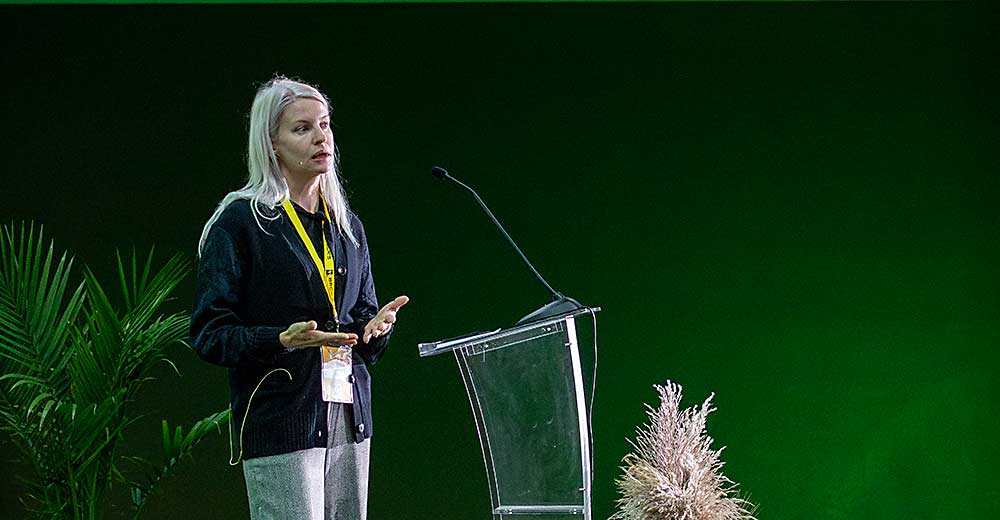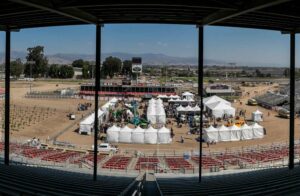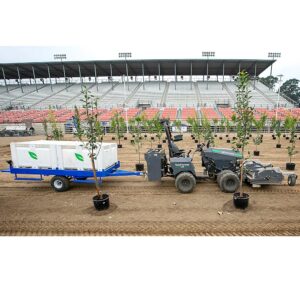
Agricultural technology success requires support from both investors and customers, but the lack of grower involvement in tech development might be slowing the pace of progress.
“I talk to a lot of people in my day-to-day existence about ag tech. Very few of them are growers,” Jennifer Marston, global ag tech editor for AgFunder, said during the keynote address at the FIRA USA agricultural automation conference in September in Salinas, California. “And I really strongly believe that that needs to change.”
AgFunder is a global venture capital firm that funds startups up and down the food supply chain — from farm fields to restaurants. FIRA is a trade show and convention about automation technology for specialty crops. Marston’s address focused on the challenges in taking technology from investment to adoption.
The past few years have been a wild ride for food supply innovators, at least when it comes to funding. Over the past 10 years, capital investment has steadily increased, she said, skyrocketing in 2021 and returning to earth in 2022.
“This is definitely a time when there’s not going to be a lot of funding, investors are hanging on to what they have, and we’re looking at it staying that way for the next couple of years at least,” she said.
However, throw out the anomaly of 2021, and the overall trajectory leaves the industries on a moderate path. In 2021, investors poured $53.2 billion into a broad category Marston calls agrifood tech. That dropped to $29.6 billion in 2022, roughly on par with 2020. Blame the usual suspects of the pandemic, tangled supply chains and international conflicts.
Investment specifically in farm technology — a subcategory that includes indoor farming, insect rearing and biological compounds — followed a less extreme curve with $7.3 billion allocated in 2020, $10.9 billion in 2021 and $10.2 billion in 2022. Of that $10.2 billion, roughly 10 percent is for automation and mechanization of farming equipment, such as driverless tractors.
Preliminary data from 2023 shows a continuing downward trend but with a silver lining for growers, she said in a follow-up interview with Good Fruit Grower. Most funding has shifted from e-grocery and delivery startups to farming activities.
Mixed signals aside, the whole funding process would benefit from better communication with growers, Marston said. That theme echoed throughout FIRA.
Growers need to clearly tell engineers which crops and which tasks make the most sense for automation, she said, and growers likely will know best how to make expensive automation accessible to smaller operations.
FIRA featured some grower panelists, but representatives from the funding and startup worlds led most of the presentations. Organizers estimated that 25 percent of the 2,000 attendees counted themselves as growers.
“I think about it all the time, how do we get more growers here?” she said. “And I would say, put them right here and ask them questions. And don’t be afraid to get negative answers, because that’s the only way we’re going to move forward is if we really know the true problems.”
Grower involvement at events is “an industrywide problem,” said Walt Duflock, vice president of innovation for Western Growers, the main organizer of FIRA USA. They have farms to tend.
However, the conference and harvest overlapped more than usual in California this year because rain and flooding last spring delayed the whole growing season in places. Duflock, who lives near Salinas, has friends who farm 10 minutes away but couldn’t make it this year.
In 2024, growers will receive free registration, while Duflock and other planners have been discussing ways to include growers on more panels, he said.
—by Ross Courtney








Leave A Comment